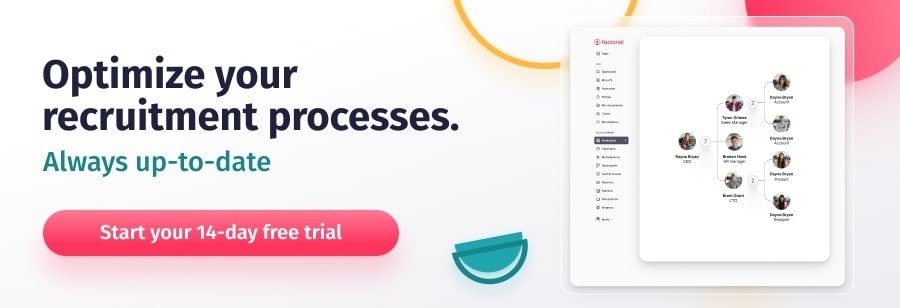Hiring and retaining the right employees is one of the biggest challenges both HR and employers have. As long as there is a business to run, staffing will be an ever-present challenge. Yet, finding the balance between having too few and too many employees can often be tricky. Too many workers can drastically increase your overhead costs, whereas too few can limit business expansion. So, how do you find the perfect balance? In this post, we’re going to look at the effects of overstaffing and understaffing, and offer some solutions to these issues.

Understaffed and overworked
Since the onset of the pandemic, employers have faced record numbers of employee resignations. The so-called “Great Resignation” hasn’t shown any signs of slowing down either. In March of 2022 alone, 4.5 million workers in the United States quit their jobs. The large quantity of voluntary resignations has left many companies understaffed and overworked.
The current situation has particularly impacted the work of recruiting managers and small business hiring managers, who find it difficult to maintain a balanced workforce and fill vacancies. The pressure is high to find top talent and to do it fast. If not, understaffing can easily lead to bigger and more cyclical problems. If good talent leaves and is not immediately replaced, remaining team members are left to pick up the slack. As a result, employee burnout and turnover run rampant, and the company’s work culture suffers.
Understaffed and overstaffed meaning
At the heart of every company, is its staff. The workers are what make the cogs go round. Yet, the task of finding employees is not an easy one. This process is known as staffing
g. Staffing refers to the ongoing exercise of finding, choosing, assessing, and training current or future employees, otherwise known as recruitment and selection. The main goal of this process is to employ the most suitable candidates for the roles needed. It can be done either within the company itself or by outside contractors, depending on the company’s needs. The activities normally carried out within the staffing process include:
- Profiling the job position
- Choosing employees
- Setting standards of performance
- Assessing performance levels
- Training and further development
It seems pretty straightforward. Yet, often there are a lot of issues with this lengthy process, which can be problematic for a company. You might be wondering, “how can staffing affect a business?” Forecasting staffing activity is an important element in the strategic planning of a company. If staffing numbers are not planned carefully, the result can be overstaffing or understaffing. Both of which create a whole host of issues for a business. Both extremes on the staffing scale can have a direct and negative effect on business growth, profitability, turnover levels, and more. Yet, this is just the tip of the iceberg.
Understaffing problems
Here’s a scenario you may be familiar with. After a slump, the economy starts to pick up. Customers start coming to your business again and demand slowly increases. Now, you may find that you’re understaffed. But, what does it mean to be understaffed at work?
An understaffed team is a stressed-out team
If there are not enough staff on board to carry out tasks, then it will mean that a small number of employees have too much to do. Piling the work on a few will put pressure and stress on those individuals. They may become overwhelmed with the workload and hence suffer from stress-related problems, leading to poor performance levels. This reduces productivity and the health of your workforce, meaning that some workers may even have to take time off.
Understaffing leads to higher turnover
Due to the increased workload, some employees may become disillusioned with the business. They may feel overworked and undervalued. As a result, you may find that employees leave the company to find work with another business that has enough staff to help cover the volume of work. Causes of high turnover rates like this, can easily be avoided.
Understaffing can reduce the quality of work
As employees have a high workload, the quality of this work is likely to be lowered. The business’s product and service will suffer as a result. You may be saving money on workforce costs, but the quality of the work you have in place could be unsatisfactory.
An understaffed team can stunt business growth
Understaffing in the workplace can be problematic also as it may limit the company’s abilities to expand. When the business starts to expand, if your workforce does not grow with it, this means that expansion will be stunted. As such, organizations may miss out on exciting new opportunities for growth.
Disadvantages of overstaffing
Next scenario. Your company was doing well, demand was high and the size of your workforce was just right. Then, out of nowhere, the economy nosedives leaving you with a sharp decline in demand and an office full of workers. Suddenly, you’re overstaffed. So, what problems can this bring to a business?
Overstaffing means overspending
By far the biggest problem associated with this is the cost of paying employee salaries. The biggest expenditure for any company is its workforce. Yet, it’s highly unlikely that an employer would want to pay this large expense to a workforce that doesn’t have any work to do. You will notice that you’re overstaffed if you see that your labor costs remain high but your sales revenue is decreasing. This is a big warning sign. If not addressed, it can lead to serious financial problems or even bankruptcy.
Overstaffing reduces engagement levels
Typically, when an organization is overstaffed, there is not enough work to go around for everyone. You see that employees have more time on their hands and tasks are few and far between. This can lead to employees feeling disengaged and also result in low levels of organizational commitment to the company. Employee morale is low, and although there are plenty of staff, the business suffers.
Layoffs are likely
If a company is overstaffed, it’s likely that it’ll have to consider laying off employees. This can either be temporary or permanent, depending on the business’s growth potential. As such, it can cause serious financial problems for employees. Although this is the worst-case scenario, layoffs save money and hence save the business from going under.
Overstaffing and Understaffing Solutions
As shown above, if staffing is not managed correctly and the scales tip to one side, a number of problems ensue. Finding the balance between employing too many staff or not enough, is tricky, even for the most seasoned of HR professionals. So, what are some ways to balance staffing levels within the workplace? Here are some key ways to solve the problem of overstaffing and understaffing.
Staffing software
One of the most useful ways to manage the number of employees you have is by using HR solutions software. Using software like Factorial to manage your HR, offers a simple staff management solution. For instance, software to assist in staffing can allow you to set minimum levels of staff required for a business. As such, the software would inhibit employees to take time off if it means going below the level set within the program. This is a great long-term solution for companies looking seriously to balance out their staffing numbers.
Specialist sub-contracting agency
One way of solving the problem of staffing is by using a specialized sub-contracting agency. Much like a temp agency, they provide temporary staff to fill roles. Yet, unlike a temp agency, these workers have unique, specialist skills, that could be extremely useful to your business. If you’re unsure about hiring full-time workers in an unstable economic environment, you may want to consider these agencies. When you have a busy time, these highly skilled workers can stand in for your business, taking over some of the burdens from other workers.
Build a talent pool
An excellent way to avoid issues with understaffing and talent shortage is by creating an applicant talent pool. This can easily be done by saving the curriculums of all qualified candidates who apply for a position. Having a talent pool can be especially useful for startups and businesses that are growing quickly. You can reduce your cost to hire and time to hire candidates for new positions. While it’s possible to create an applicant talent pool by saving resumes to a drive, it can be extremely time-consuming and chaotic. The most efficient way is to use an applicant tracking system to automatically stay on top of potential candidates for a position.
Open communication
By having an open-door policy, your employees will feel that they can come and talk to you about staffing problems. Communication is key here. The best way to gauge if employees are feeling stressed and overworked, or on the contrary, that they don’t have enough to do, is through communication. Then, you will know how best to approach balancing out the situation.
These solutions should offer a way to help you find the right balance between overstaffing and understaffing within your company.
Better manage your HR processes with Factorial.
Written by: Charlotte Stace


